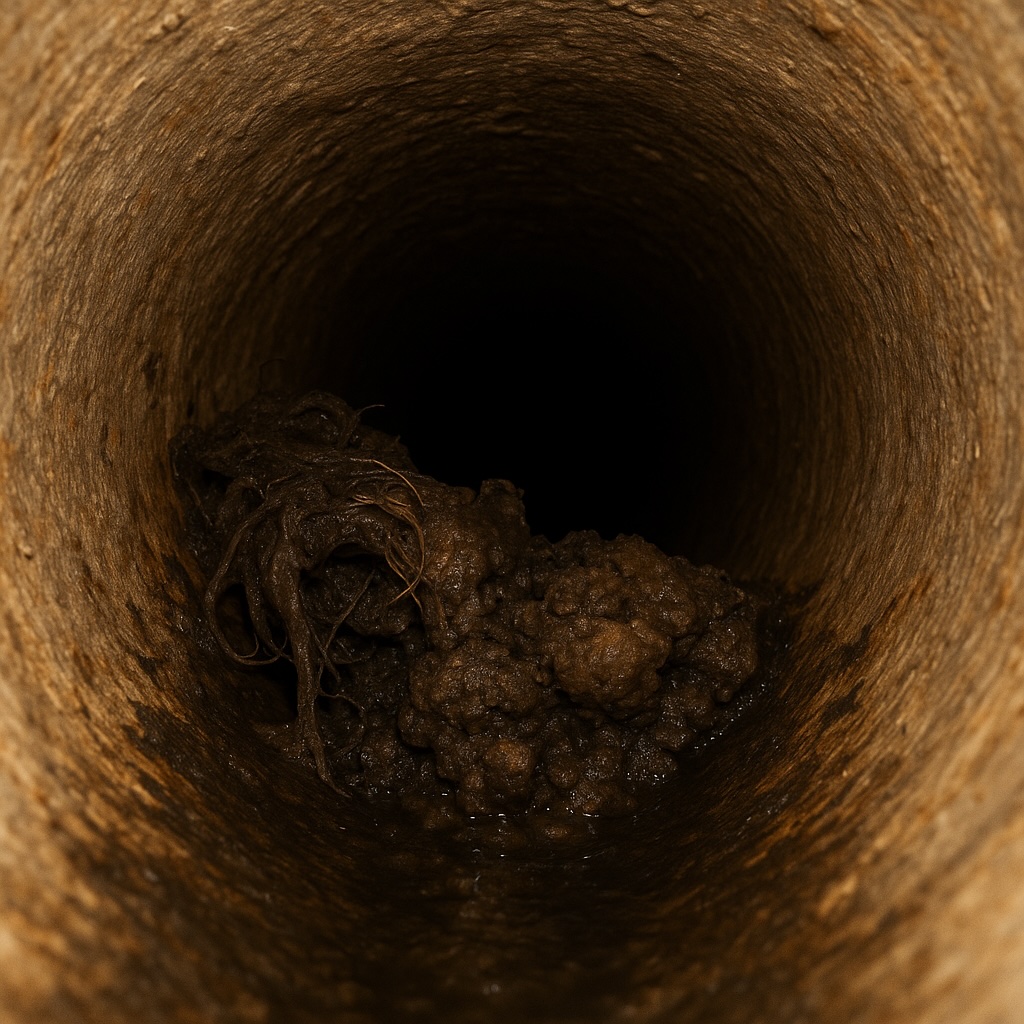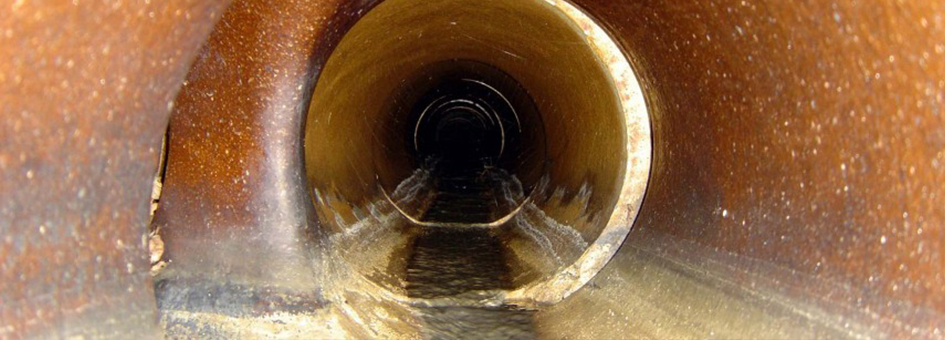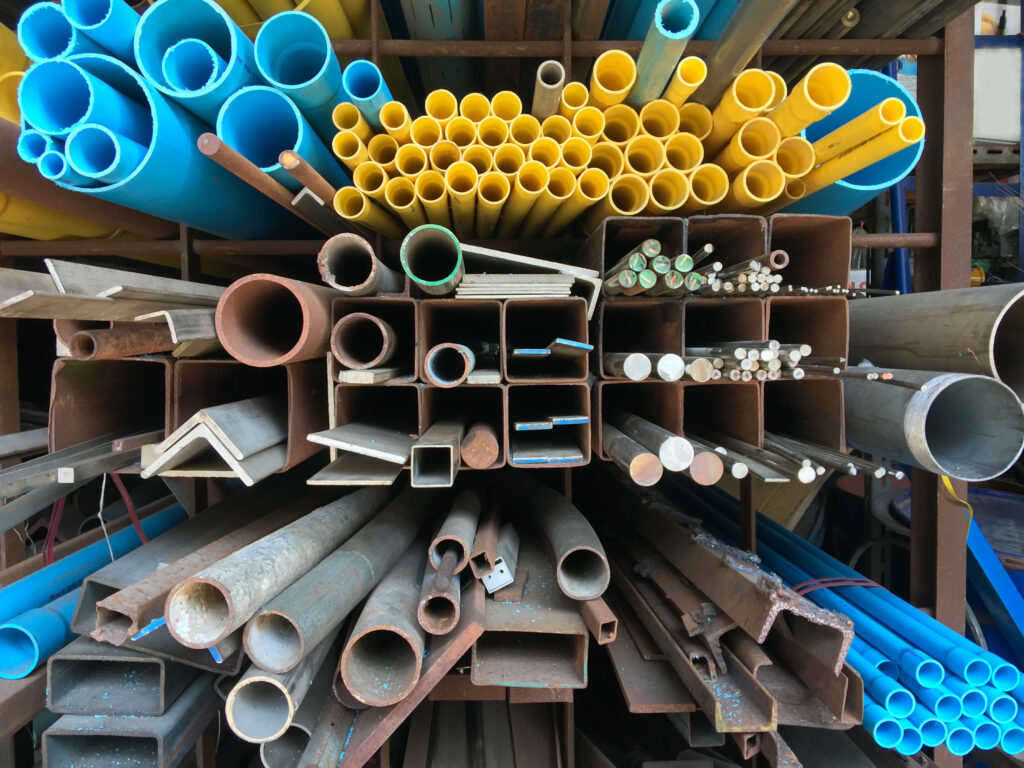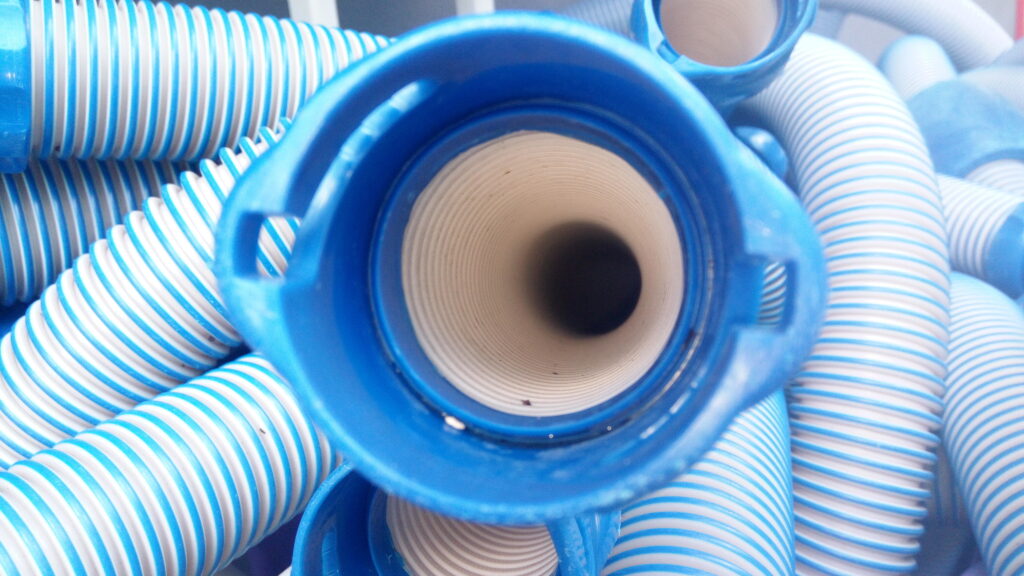Choosing the Perfect Pipe Size for Your Main Sewer Line

Introduction
Choosing the perfect pipe size for your main sewer line is critical for the overall efficiency of your drainage system. The right pipe size can prevent blockages, reduce maintenance costs, and ensure a smooth flow of wastewater out of your property.
Key takeaway: In this article, we discuss the different types of pipes for main sewer lines, standard sizes you should be aware of, and provide expert tips on how to determine the perfect pipe size.
Additionally, when it comes to maintaining a well-functioning sewer system, it's important to consider certain factors beyond just pipe size. Health and safety is one such aspect that requires attention. At Total Leak Detection, we prioritize the well-being of our customers and employees in all our leak detection services, including those related to sewer systems. Regular sewer camera inspections are essential for maintaining your sewer line's health and identifying issues before they become costly repairs.
Moreover, after completing any remediation project within your property, it is crucial to ensure its success through a process called Post Remediation Verification (PRV). This process guarantees that the remediation was effective in addressing any issues such as mold growth or leaks. Understanding PRV can help you assess the efficacy of your own projects and make necessary improvements.
By considering these additional elements alongside pipe size determination, you can make informed decisions that will enhance the reliability and functionality of your sewer system.

1. Types of Pipes for Main Sewer Lines
Selecting the right material for your main sewer line is crucial for ensuring its longevity and optimal functionality. Here are some common materials used for main sewer lines:
Clay Pipes
- Durability: They’ve been used for a long time because of their exceptional strength.
- Cost: Usually more expensive than other options.
- Resistance: Can handle chemicals well, but tree roots can easily infiltrate them.
Cast Iron Pipes
- Durability: Known for their strength and long lifespan.
- Cost: Relatively more expensive initially, but their durability makes them cost-effective in the long run.
- Resistance: Highly resistant to physical damage, although they may rust over time.
PVC (Polyvinyl Chloride) Pipes
- Durability: Very durable and can resist corrosion and root intrusion effectively.
- Cost: More affordable than clay or cast iron pipes.
- Resistance: Lightweight, easy to install, and excellent at resisting chemicals and roots.
HDPE (High-Density Polyethylene) Pipes
- Durability: Extremely durable and can last significantly long.
- Cost: Relatively more expensive initially, but they require minimal maintenance.
- Resistance: Excellent at resisting corrosion, chemicals, and root intrusion.
Understanding these materials can help you make an informed decision based on your specific requirements: longevity, affordability, or resistance to potential damage. Each material offers distinct advantages that work best in different situations.
For more insights on maintaining your plumbing system effectively, check out our comprehensive guide on Eliminating Air Pockets. This resource provides expert tips and strategies to remove trapped air from water pipes effectively, ensuring smoother and quieter plumbing operation.
If you’re currently dealing with issues like slab leaks, our Slab Leak Detection Services can promptly identify and resolve them. Our efficient techniques for detecting and repairing slab leaks will help mitigate further damage to your property.
2. Understanding Standard Sewer Pipe Sizes

2.1 Residential Sewer Pipe Sizes
Residential sewer pipes typically have a diameter ranging from 4 inches to 6 inches. This size range is usually enough to handle the wastewater flow from a regular household. Several factors affect the choice of pipe size:
- Number of Bathrooms: The more bathrooms in a house, the more wastewater needs to be transported. For homes with multiple bathrooms, it’s recommended to use a larger diameter pipe, such as 6 inches, for better drainage.
- Household Size: Larger families produce more wastewater. In such cases, using a bigger sewer pipe diameter may be necessary.
- Fixtures and Appliances: Having multiple water-intensive appliances like dishwashers and washing machines can also influence the selection of pipe size.
- Clogged drains: Neglecting proper maintenance can lead to clogs and backups in your sewer system. Regular inspections and maintenance by professionals can help prevent these issues. Our professional drain cleaning services use advanced techniques like hydro jetting to keep your sewer lines clear and functioning properly.
It’s important to properly size your residential sewer pipes to prevent clogs and backups. Having the right diameter can save you from potential problems in the future.
2.2 Commercial Sewer Pipe Sizes
Commercial sewer systems often need larger diameters because of the higher volumes of wastewater flow. Typical commercial sewer pipes range from 6 inches to as large as 12 inches or more, depending on the specific requirements of the building and its intended use.
Key factors for determining the size of commercial sewer pipes include:
- Building Occupancy: Higher occupancy levels mean more wastewater generation.
- Type of Business: Restaurants and hotels produce significantly more wastewater compared to office buildings.
- Local Regulations: Certain areas have specific requirements or regulations that dictate minimum pipe sizes for commercial properties.
- Sewer Camera Inspection: A crucial step in determining the condition of your commercial sewer pipes is a thorough inspection with advanced technology. Sewer camera inspections can identify blockages, leaks, or other issues without invasive procedures.
- Mold Testing: Mold growth is a common problem in damp environments, and it can affect both residential and commercial properties. For commercial buildings, where the presence of mold can lead to health and safety concerns for occupants, regular mold testing is essential.
Choosing the right-sized sewer pipe is crucial for maintaining an efficient drainage system, preventing clogs, and following local codes. Whether you're dealing with residential or commercial properties, consulting professionals like Total Leak Detection ensures that your system operates efficiently and complies with all relevant codes and regulations. For more tips on maintaining your sewer line, check out our guide on essential tips for maintaining your sewer line. If you need immediate assistance, contact us for professional sewer services.
2.2 Commercial Sewer Pipe Sizes
In commercial sewer systems, larger pipes are needed to handle higher volumes of wastewater compared to residential setups. The typical sizes of commercial sewer pipes range from 6 inches to 12 inches in diameter. These bigger pipes are necessary to efficiently manage the significant amount of wastewater produced by multiple restrooms, kitchens, and other facilities commonly found in commercial buildings.
Key Factors for Commercial Sewer Pipe Sizing:
- Volume of Wastewater Flow: Commercial properties often generate substantial amounts of wastewater. Larger pipes reduce the risk of clogs and backups.
- Regulatory Requirements: Many municipalities have specific codes and regulations that dictate the minimum pipe sizes for commercial sewer systems. These standards ensure that plumbing infrastructures can handle peak loads without issues.
Common Regulations Include:
- Mandates on minimum pipe diameters based on building occupancy and usage.
- Specifications for pipe materials that can withstand high flow rates and potential chemical exposure from industrial activities.
Understanding these factors is essential for selecting the right commercial sewer pipe sizes. For instance, experienced plumbing professionals can help navigate these requirements effectively, ensuring compliance and optimal performance. Additionally, considering ongoing promotions offered by plumbing service providers like Total Leak Detection could also provide cost-saving opportunities during the installation or maintenance process. Learn more about the benefits of sewer camera inspections for both residential and commercial properties.
3. Factors to Consider in Determining the Right Pipe Size
Determining the right pipe size for your main sewer line requires careful consideration of several critical factors.
1. Professional Assessment and Hydraulic Calculations
Engaging a professional to conduct a thorough assessment is essential. Hydraulic calculations help ensure that the sewer pipe system can handle the expected wastewater flow without issues. These calculations consider various parameters, such as flow rate, pressure, and pipe diameter, providing a robust foundation for decision-making.
2. Slope Gradient
The slope of the sewer line plays a vital role in maintaining adequate flow velocity. A steeper gradient may facilitate faster water movement but can also increase wear and tear on pipes. Conversely, a gentler slope might slow down the flow, leading to potential blockages. Achieving the correct balance is key for optimal system performance.
3. Velocity of Flow
The velocity at which wastewater travels through the sewer line impacts the likelihood of clogs and backups. Ensuring that pipes are neither too small nor too large helps maintain an appropriate flow velocity, reducing maintenance needs and prolonging pipe lifespan.
4. Potential Future Growth
Anticipating future developments or expansions on your property can influence your choice of pipe size. Planning for increased capacity now can save time and money later by avoiding costly upgrades or replacements.
By carefully considering these factors, you can ensure that your main sewer line operates efficiently and reliably over the long term.
4. The Role of Pipe Size in Sewer Line Repairs and Maintenance
Proper pipe size selection significantly influences the ease and frequency of repairs and maintenance for main sewer lines. Larger diameter pipes, while accommodating increased flow, also allow for easier access during repair work. Techniques like hydrojetting benefit from larger pipes as they provide ample space for equipment to maneuver, effectively clearing clogs and debris.
Hydrojetting, a high-pressure cleaning method, requires sufficient pipe diameter to maximize its efficiency. Smaller pipes may restrict the movement of hydrojetting tools, leading to less effective cleaning and more frequent blockages.
Trenchless lining techniques, used for repairing damaged sewer lines without extensive excavation, also rely on proper pipe sizing. Larger pipes facilitate easier insertion of lining materials, ensuring a smoother repair process. Conversely, undersized pipes can complicate these techniques, potentially increasing repair time and costs.
Key Points:
- Larger pipes: Enhance accessibility for repair tools and techniques.
- Hydrojetting: More effective with adequately sized pipes.
- Trenchless lining: Easier implementation with larger diameters.
Properly sized pipes not only ensure efficient wastewater flow but also minimize the hassle and cost of maintenance activities. Consulting with plumbing professionals can help determine the optimal pipe size for your specific needs, balancing flow requirements with ease of maintenance.
5. Expert Tips for Choosing and Installing the Perfect Pipe Size

Selecting the right pipe size for your main sewer line ensures a reliable and efficient drainage system. Here are some expert tips to guide you:
- Consult Experienced Professionals
- Engage with seasoned plumbing experts who possess the knowledge and expertise to assess your specific needs. They can provide valuable insights and recommendations tailored to your property’s requirements.
- Consider Future Growth
- When determining pipe size, take into account potential future expansions or increases in wastewater flow. Oversizing slightly may prevent costly upgrades later.
- Assess Flow Requirements
- Evaluate the volume of wastewater your property generates. This includes considering the number of bathrooms, kitchen usage, and any other water-consuming facilities.
- Evaluate Slope Gradient
- The slope gradient affects the velocity of wastewater flow. Ensure the chosen pipe size accommodates the necessary slope to maintain efficient drainage without causing blockages.
- Factor in Local Regulations
- Familiarize yourself with local building codes and regulations that dictate specific requirements for sewer pipe sizes in residential and commercial settings.
- Durability and Material Compatibility
- Choose a pipe material that offers durability and compatibility with your soil conditions, as well as resistance to root intrusion and corrosion.
- Professional Installation
- Ensure that the installation is carried out by qualified professionals to guarantee proper alignment, slope, and secure connections.
By following these expert tips for choosing the perfect pipe size, you can create a main sewer line system that is both efficient and durable.
Conclusion
Choosing the perfect pipe size for your main sewer line is essential for maintaining an efficient and reliable drainage system. Proper pipe sizing ensures that wastewater flows smoothly, preventing backups and reducing the need for frequent repairs. Key factors such as pipe material, slope gradient, and hydraulic calculations play a significant role in determining the appropriate size.
Professional expertise is crucial when selecting and installing your sewer pipes. Consulting with experienced plumbing professionals can help you avoid common issues and ensure compliance with local regulations. They have valuable knowledge about the best materials and sizes for your specific needs, taking into account factors like potential future growth or development on your property.
Prioritizing professional assistance not only saves time and resources but also provides peace of mind knowing that your main sewer line is built to last. Investing in the right pipe size from the beginning helps maintain the long-term health of your entire plumbing system.
For anyone dealing with this important part of home maintenance, remember:
- Proper pipe sizing is crucial for system efficiency
- Expert consultation is invaluable in making informed decisions
By focusing on these principles, you ensure a strong and durable sewer line system tailored to meet your specific requirements.